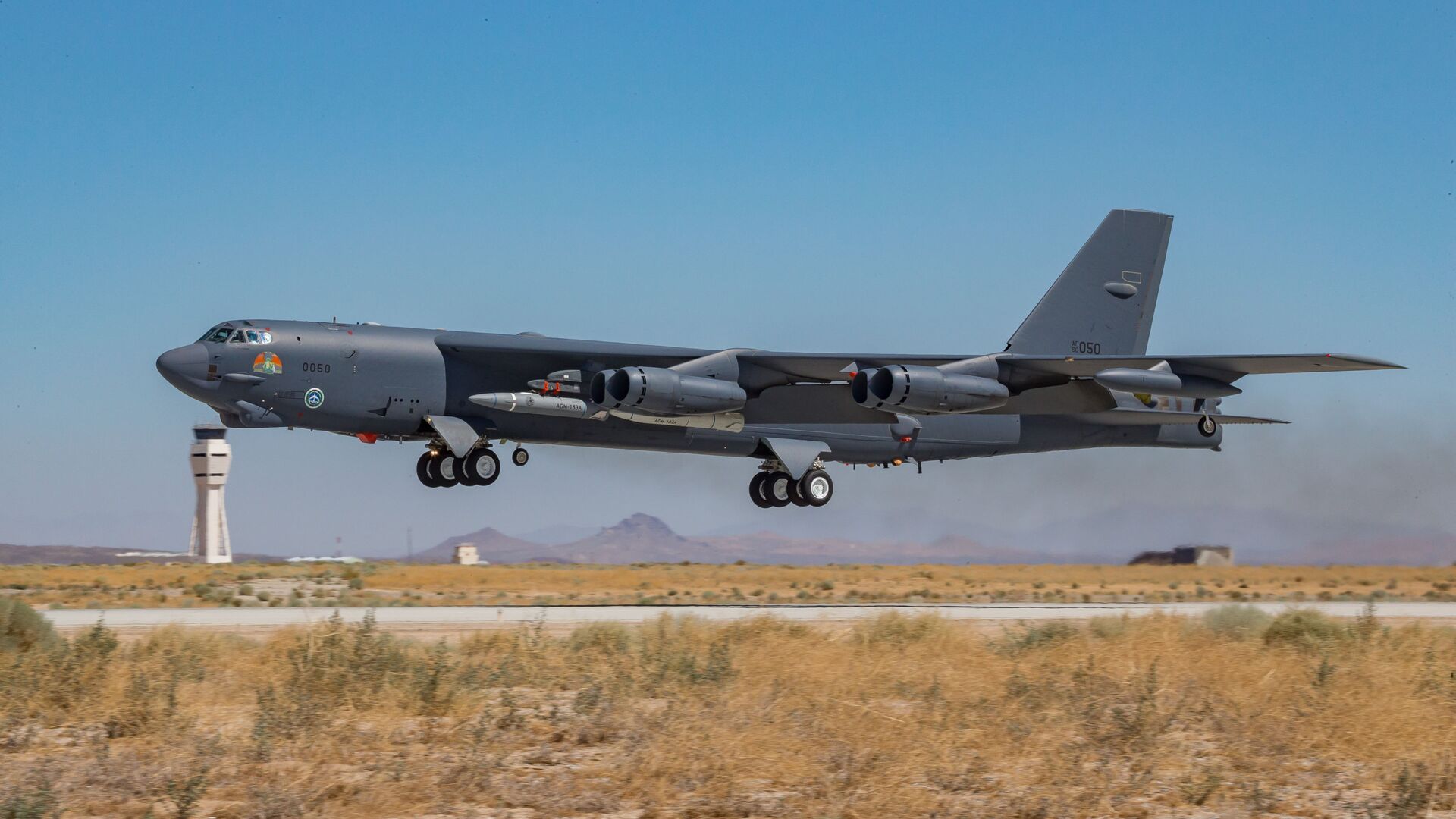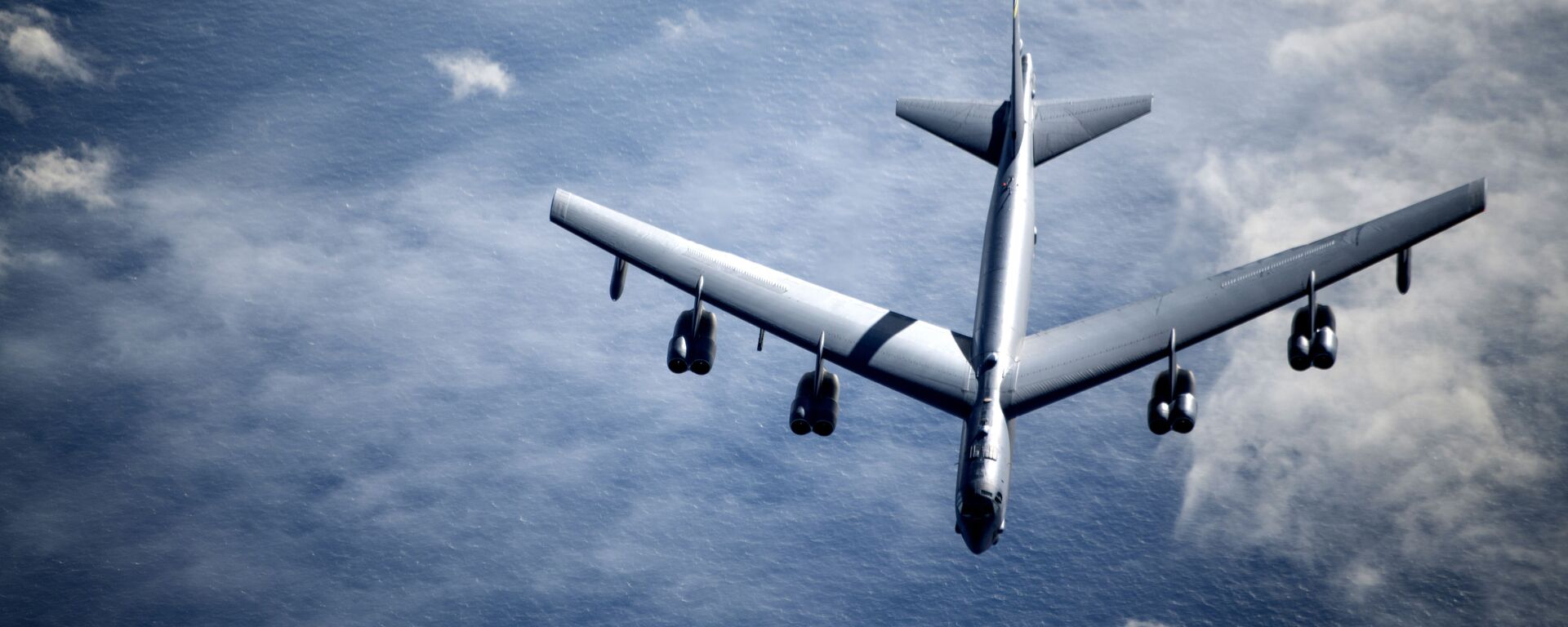https://sputnikglobe.com/20240102/us-nearly-50-billion-b-52-modernization-program-at-risk-of-failure-1115952938.html
US' Nearly $50 Billion B-52 Modernization Program at Risk of Failure
US' Nearly $50 Billion B-52 Modernization Program at Risk of Failure
Sputnik International
The United States Air Force's modernization plan for its aging B-52 bomber fleet has hit significant supply issues, putting the $48.6 billion program at risk.
2024-01-02T21:13+0000
2024-01-02T21:13+0000
2024-01-02T21:09+0000
military
northrop grumman
b-52
military & intelligence
us air force
https://cdn1.img.sputnikglobe.com/img/07e4/08/0a/1080124175_0:160:3072:1888_1920x0_80_0_0_2c784a189ece10a5c4841cac225800c1.jpg
The United States Air Force’s $48.6 billion plan to modernize its aging B-52 fleet is at risk of failing due to a failure to track spare parts and keep tabs on which manufacturers continue to produce spare parts for the Cold War-era bomber.The USAF still operates 72 B-52H bombers, the most recent of which was produced in 1962. Despite its age, Air Force Inspector General Robert P. Storch said in a November audit of the program that “the B-52 remains a cornerstone in the Air Force’s arsenal.”The modernization plan is designed to extend their use until 2060, 108 years after the B-52’s first flight, by outfitting them with new engines, sensors, electronics and a larger, more modern weapons bay. The upgraded planes will also get a new designation, B-52J, to differentiate it from non-upgraded bombers.The report says the USAF relies too heavily on cannibalizing other planes for spare parts and frequently has to wait for new parts. Both issues have led to a decrease in mission-ready planes for the fleet.To rectify the issue, the USAF said it would, at the audit’s recommendation, implement a code review to ensure that proper inventory codes are used for spare parts. The audit says the USAF only partially responded to its two other recommendations: to create a comprehensive list of all spare parts for the B-52 and start tracking which manufacturers still produce components and how long they plan to continue to produce them.Because of that partial response, the program remains open to audit and review.
https://sputnikglobe.com/20230320/russian-su-35-fighter-jet-intercepts-two-us-b-52-bombers-over-baltic-sea---defense-ministry-1108618660.html
Sputnik International
feedback@sputniknews.com
+74956456601
MIA „Rossiya Segodnya“
2024
News
en_EN
Sputnik International
feedback@sputniknews.com
+74956456601
MIA „Rossiya Segodnya“
Sputnik International
feedback@sputniknews.com
+74956456601
MIA „Rossiya Segodnya“
b-52 modernization, b-52j, military supply chain issues
b-52 modernization, b-52j, military supply chain issues
US' Nearly $50 Billion B-52 Modernization Program at Risk of Failure
The B-52 Stratofortress’ maiden flight took place in April 1952. It is still flown by two active-duty bomb wings and one reserve bomb wing.
The United States Air Force’s $48.6 billion plan to modernize its aging B-52 fleet is at risk of failing due to a failure to track spare parts and keep tabs on which manufacturers continue to produce spare parts for the Cold War-era bomber.
The USAF still operates 72 B-52H bombers, the most recent of which was produced in 1962. Despite its age, Air Force Inspector General Robert P. Storch said in a November audit of the program that “the B-52 remains a cornerstone in the Air Force’s arsenal.”
The modernization plan is designed to extend their use until 2060, 108 years after the B-52’s first flight, by outfitting them with new engines, sensors, electronics and a larger, more modern weapons bay. The upgraded planes will also get a new designation, B-52J, to differentiate it from non-upgraded bombers.
The report says the USAF relies too heavily on cannibalizing other planes for spare parts and frequently has to wait for new parts. Both issues have led to a decrease in mission-ready planes for the fleet.
To rectify the issue, the USAF said it would, at the audit’s recommendation, implement a code review to ensure that proper inventory codes are used for spare parts. The audit says the USAF only partially responded to its two other recommendations: to create a comprehensive list of all spare parts for the B-52 and start tracking which manufacturers still produce components and how long they plan to continue to produce them.
Because of that partial response, the program remains open to audit and review.
The B-52 operates alongside two other bombers in the USAF, the Rockwell B-1B bomber, introduced in 1986 and the B-2 “stealth” bomber, introduced in 1997. Northrop Grumman is also developing the B-21 Raider, an updated stealth bomber that conducted its first test flight in November 2023.
The USAF says the B-52 is still a capable and versatile craft that can be used alongside the more modern bombers.



